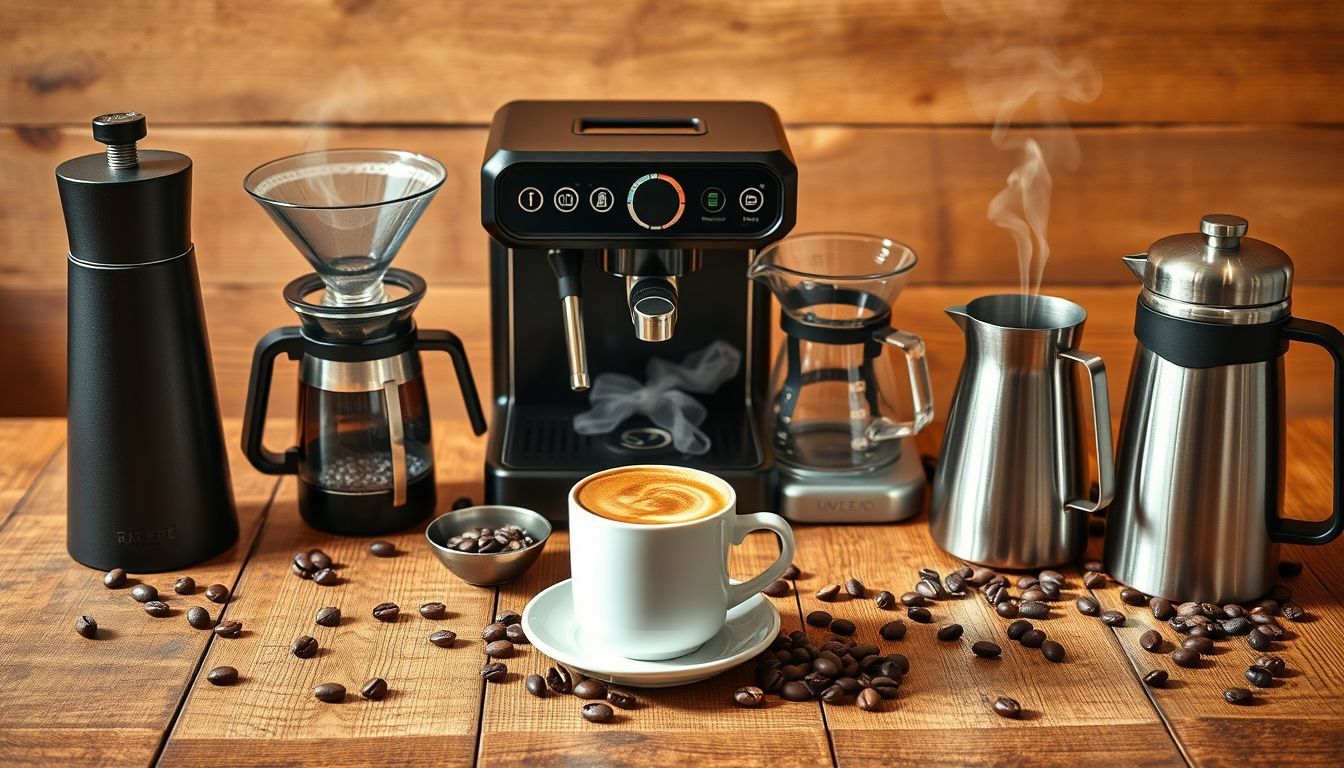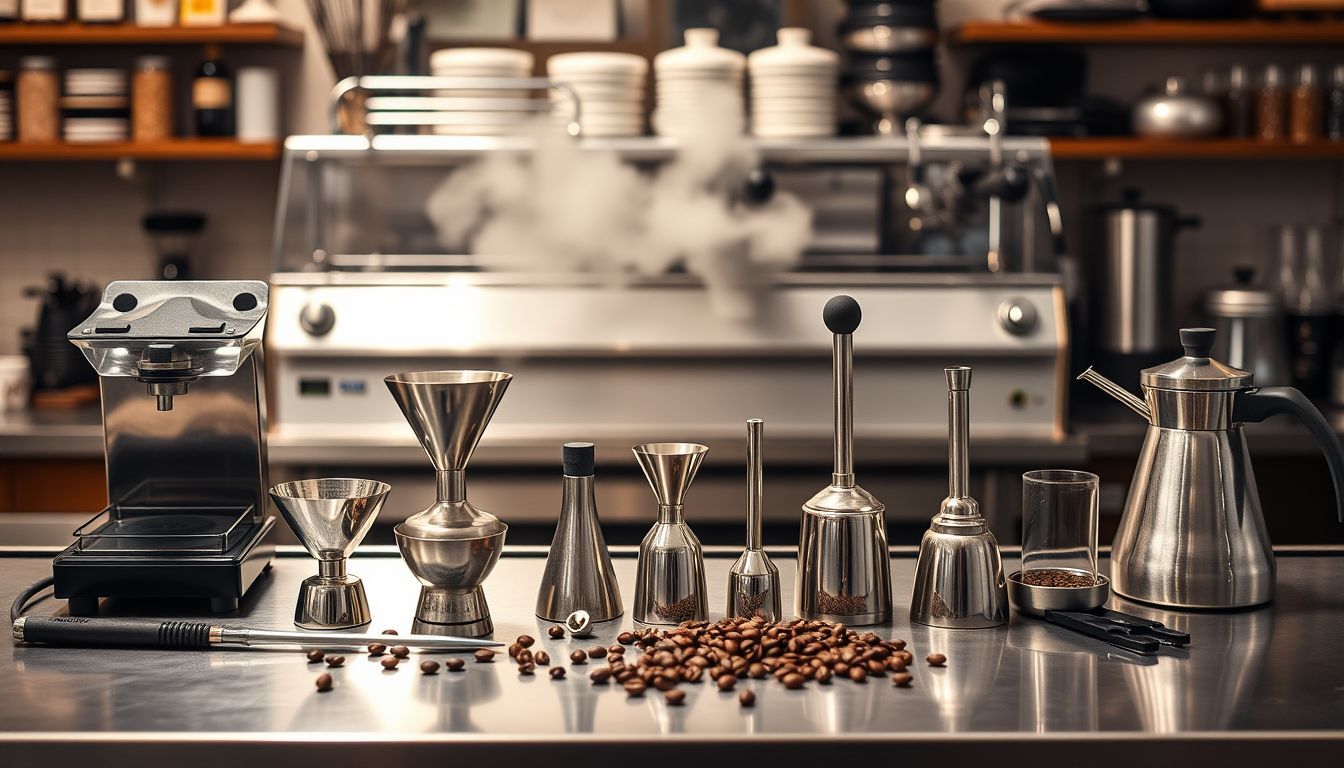The Ultimate Guide to Choosing Your First Espresso Machine
Buying your first espresso machine is like choosing a life partner—expensive, complicated, and everyone has opinions. Here's how to navigate the maze without breaking your bank or your heart.

The Ultimate Guide to Choosing Your First Espresso Machine
Let me guess: you've been lurking in coffee forums for months, watching YouTube videos of baristas pulling perfect shots, and slowly convincing yourself that spending $2,000 on an espresso machine is a "reasonable investment in your daily happiness." You've probably also discovered that asking "What's the best espresso machine?" in any coffee community is like asking "What's the best religion?" in a philosophy class—you'll get passionate answers, but no consensus.
As someone who's spent over a decade analyzing espresso machines and watching the home espresso market evolve from a niche hobby to a $1.8 billion industry, I can tell you that choosing your first espresso machine is simultaneously the most exciting and most overwhelming decision in the coffee world. It's also the decision most likely to result in buyer's remorse, kitchen counter regret, and the kind of expensive lessons that make you question your life choices.
But here's the thing: it doesn't have to be this way. The espresso machine market has matured dramatically in recent years, offering genuine quality at every price point. The challenge isn't finding a good machine—it's finding the right machine for your specific needs, budget, and tolerance for complexity.
The dirty secret of the espresso industry is that most people buy machines that are either too advanced for their skills or too basic for their ambitions. The result? Expensive equipment that either intimidates users into submission or disappoints them into abandoning espresso altogether.
The Espresso Reality Check: What You're Actually Getting Into
The Learning Curve Truth
Let's start with some brutal honesty: making good espresso is hard. It's not "follow a recipe and get consistent results" hard—it's "master multiple variables simultaneously while accepting that your first hundred shots will range from mediocre to undrinkable" hard.
Espresso requires you to control:
- Grind size (measured in microns, adjusted by feel)
- Dose (typically 18-20g, but varies by basket and preference)
- Distribution (even coffee bed for uniform extraction)
- Tamping (30lbs of pressure, level and consistent)
- Timing (25-30 seconds for a double shot)
- Temperature (200-203°F, machine dependent)
- Pressure (9 bars during extraction)
Change any variable, and your shot changes. This isn't a bug—it's a feature. But it means your first espresso machine is really buying you the privilege of learning a complex skill.
The Equipment Ecosystem
Here's what the marketing materials don't tell you: an espresso machine is just the beginning. You'll also need:
Essential Accessories:
- Quality grinder ($200-800)
- Tamper ($30-150)
- Scale ($30-100)
- Milk steaming pitcher ($25-50)
- Cleaning supplies ($30-50)
Total Reality Check: Your $500 espresso machine quickly becomes a $1,000+ setup. Budget accordingly.
The Time Investment
Making espresso isn't like brewing coffee—it's a 10-15 minute ritual that requires attention and practice. Factor this into your morning routine expectations.
Understanding Espresso Machine Types
Manual Lever Machines: The Purist's Choice
How They Work: You control pressure manually through a lever system. No pumps, no electronics, just you and physics.
Pros:
- Complete control over pressure profiling
- Minimal electronics to fail
- Often beautiful, heirloom-quality construction
- Quiet operation
Cons:
- Steep learning curve
- Physically demanding
- Limited temperature control
- Not ideal for milk drinks
Best For: Experienced coffee enthusiasts who view espresso as a craft and have patience for mastery.
Notable Models: La Pavoni Europiccola ($400-600), Flair Espresso Maker ($200-400)
Semi-Automatic Machines: The Sweet Spot
How They Work: Machine controls pressure and temperature, you control timing and technique.
Pros:
- Good balance of control and convenience
- Wide range of price points
- Allows skill development
- Most versatile category
Cons:
- Requires technique development
- Timing is manual
- Consistency depends on user skill
Best For: Most first-time buyers who want to learn proper espresso technique.
Notable Models: Gaggia Classic Pro ($450), Rancilio Silvia ($735), Breville Barista Express ($700)
Automatic Machines: The Convenience Play
How They Work: Machine controls pressure, temperature, and timing. You just press a button.
Pros:
- Consistent results
- Easy to use
- Good for busy mornings
- Less technique required
Cons:
- Less control over variables
- Can mask poor technique
- Often more expensive
- May limit learning
Best For: Users who prioritize convenience over control and don't want to master manual timing.
Notable Models: Breville Barista Touch ($1,000), Jura E8 ($2,300)
Super-Automatic Machines: The Full Service Option
How They Work: Built-in grinder, automatic dosing, tamping, extraction, and milk frothing. Coffee shop in a box.
Pros:
- Ultimate convenience
- Consistent results
- Handles entire process
- Good for offices or high-volume use
Cons:
- Very expensive
- Complex maintenance
- Limited customization
- Can't use different grinders
Best For: Users who want café-quality drinks with zero technique required and have substantial budgets.
Notable Models: Jura Z10 ($3,500), Saeco Xelsis ($2,800)
Budget Categories and Recommendations
Entry Level ($300-600): Learning the Ropes
The Reality: These machines require patience and realistic expectations. They can make good espresso, but you'll need to work for it.
Top Pick: Gaggia Classic Pro ($450)
- Proven design with 30+ year track record
- Commercial-grade components
- Active modding community
- Excellent build quality
- Manual steam wand for learning
Budget Alternative: De'Longhi Stilosa ($100)
- Basic but functional
- Good for learning fundamentals
- Pressurized baskets for forgiveness
- Limited longevity
What to Expect: Longer heat-up times, basic temperature control, manual everything. Perfect for learning, frustrating for perfectionists.
Mid-Range ($600-1,200): Serious Home Brewing
The Sweet Spot: These machines offer genuine quality with features that make consistent espresso achievable.
Top Pick: Rancilio Silvia ($735)
- Commercial-grade build quality
- Excellent temperature stability
- Durable construction
- Strong resale value
- Upgradeable with PID
Feature-Rich Alternative: Breville Barista Express ($700)
- Built-in grinder
- Pressure gauge
- Pre-infusion
- Automatic dosing
- Good for beginners
What to Expect: Better temperature control, faster heat-up, more consistent results, features that aid learning.
Premium ($1,200-2,500): Enthusiast Territory
The Performance Tier: These machines offer professional-level capabilities with home-friendly features.
Top Pick: Rocket Appartamento ($1,750)
- Heat exchanger design
- Commercial aesthetics
- Excellent build quality
- Simultaneous brewing and steaming
- Italian craftsmanship
Tech-Forward Alternative: Breville Dual Boiler ($1,500)
- Dual boiler system
- PID temperature control
- Pre-infusion
- Shot timer
- Excellent value
What to Expect: Professional-level performance, simultaneous brewing and steaming, precise temperature control, café-quality results.
Luxury ($2,500+): No Compromises
The Professional Tier: These machines offer everything you could want, often with features borrowed from commercial equipment.
Top Pick: La Marzocco Linea Mini ($4,500)
- Dual boiler system
- Commercial-grade components
- Precise temperature control
- Professional aesthetics
- Exceptional build quality
What to Expect: Zero compromises on performance, commercial-level consistency, heirloom quality construction, bragging rights.
The Grinder Reality: Your Most Important Decision
Why Your Grinder Matters More Than Your Machine
Here's the uncomfortable truth: a $200 espresso machine with a $400 grinder will make better coffee than a $600 machine with a $200 grinder. Espresso is unforgiving about grind quality—inconsistent particle sizes create channeling, uneven extraction, and disappointing shots.
Grinder Categories
Entry Level ($200-400):
- Baratza Sette 270 ($350): Purpose-built for espresso
- Eureka Mignon Notte ($280): Quiet, consistent, compact
Mid-Range ($400-800):
- Eureka Mignon Specialita ($550): Excellent consistency, low retention
- Baratza Vario ($480): Versatile, upgradeable
Premium ($800+):
- Eureka Atom 75 ($900): Commercial-grade performance
- Mahlkönig X54 ($1,200): Professional-level consistency
The Built-In Grinder Debate
Machines with built-in grinders offer convenience but compromise on grind quality and flexibility. They're good for beginners but limiting for advancement.
Pros: Convenience, space saving, integrated workflow
Cons: Lower grind quality, can't upgrade separately, harder to clean
Key Features Decoded
Temperature Control
Basic Thermostats: ±10°F variation, adequate for learning
PID Controllers: ±1°F precision, essential for consistency
Dual Boilers: Separate temperatures for brewing and steaming
Pressure Systems
Vibratory Pumps: Standard in home machines, adequate pressure
Rotary Pumps: Quieter, more durable, found in premium machines
Manual Control: Lever machines give complete pressure control
Boiler Configurations
Single Boiler: One temperature, must switch between brewing and steaming
Heat Exchanger: Brew and steam simultaneously, some temperature variation
Dual Boiler: Optimal control, independent temperatures, premium feature
The First-Timer's Decision Framework
Step 1: Define Your Priorities
Convenience vs. Control: Do you want to push a button or master a craft?
Budget Reality: Include grinder and accessories in your budget
Space Constraints: Measure your counter space and factor in workflow
Drink Preferences: Espresso only, or milk drinks too?
Time Investment: How much time do you want to spend per drink?
Step 2: Match Machine to Goals
Learning-Focused: Semi-automatic with manual controls
Convenience-Focused: Automatic or super-automatic
Performance-Focused: Premium semi-automatic or dual boiler
Budget-Focused: Entry-level semi-automatic with upgrade path
Step 3: Plan Your Ecosystem
Essential Day One:
- Machine
- Grinder
- Scale
- Tamper
- Basic cleaning supplies
Upgrade Path:
- Better grinder
- Precision accessories
- Water filtration
- Advanced cleaning tools
Common First-Timer Mistakes
The Feature Trap
Buying a machine with features you don't understand or won't use. Start simple, upgrade later.
The Grinder Afterthought
Spending all your budget on the machine and skimping on the grinder. This guarantees disappointment.
The Impatience Problem
Expecting café-quality results immediately. Plan for a learning curve measured in months, not days.
The Upgrade Paralysis
Waiting for the "perfect" machine instead of starting with something good. Perfect is the enemy of good enough.
Maintenance Reality Check
Daily Tasks
- Rinse group head - Empty drip tray - Wipe down surfaces - Purge steam wandWeekly Tasks
- Deep clean portafilter and baskets - Clean water reservoir - Descale if needed (depends on water hardness)Monthly Tasks
- Descaling cycle - Deep clean internal components - Check for wear and tearThe True Cost of Ownership
Factor in ongoing costs:
- Descaling solution: $20-30 annually
- Replacement parts: $50-100 annually
- Professional service: $100-200 annually (if needed)
Making the Final Decision
The 80/20 Rule
Choose a machine that meets 80% of your needs perfectly rather than 100% of your needs adequately. You can always upgrade later.
The Resale Reality
Quality machines hold their value well. Factor resale value into your decision—it's easier to upgrade when you can recoup most of your investment.
The Support System
Consider:
- Local service availability
- Parts availability
- Community support (forums, videos)
- Manufacturer warranty and support
Conclusion: Your Espresso Journey Starts Here
Choosing your first espresso machine isn't about finding the perfect machine—it's about finding the right machine to start your journey. Every espresso enthusiast I know has owned multiple machines, each teaching them something new about their preferences and priorities.
The "best" first espresso machine is the one that matches your current skill level while providing room to grow. It's the one that fits your budget without requiring you to eat ramen for three months. It's the one that makes you excited to wake up and practice your craft, even when your shots taste terrible.
Remember, the most expensive machine in the world won't make good espresso if you don't understand the fundamentals. Start with something that encourages learning, invest in a quality grinder, and be patient with yourself. The journey from terrible shots to consistently good espresso is frustrating, rewarding, and absolutely worth it.
Your first espresso machine won't be your last, and that's perfectly fine. Think of it as tuition for espresso university—an investment in learning that will pay dividends in every cup you make for years to come.
Welcome to the wonderful, obsessive, occasionally maddening world of home espresso. Your wallet may never forgive you, but your taste buds certainly will.

Sofia Rossi
I started my career in a world of spreadsheets and boardrooms, but I quickly realized the most interesting data was in the way people interacted when the pressure was on. My novels are my way of analyzing the human heart—the messy, complicated, and often hilarious parts. I write about the lives we lead now, with all the love, ambition, and absurdity that comes with it.


